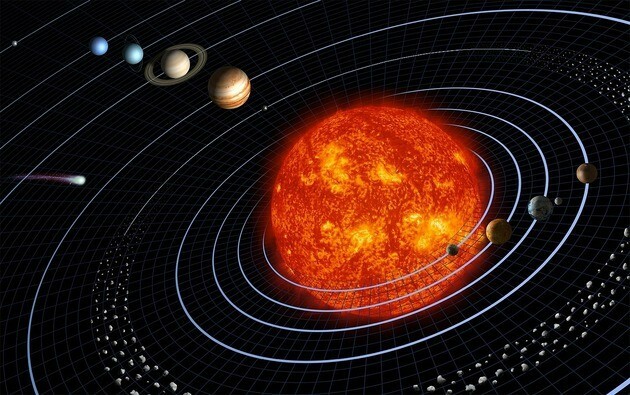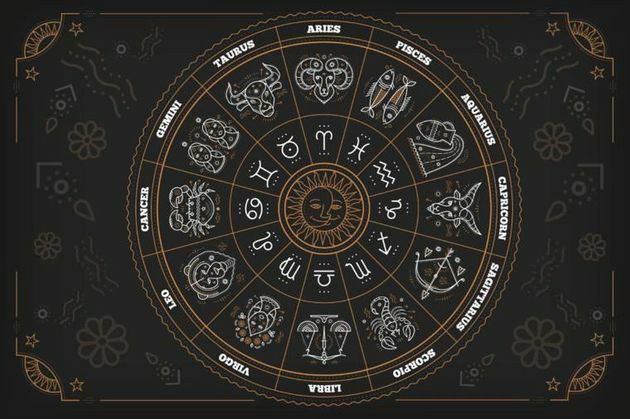Astronomy is a natural science that seeks to understand phenomena originating outside the Earth's atmosphere. It studies celestial bodies (planets, comets, asteroids, stars, nebulae, galaxies, etc.) and the universe as a whole. It involves various scientific branches such as physics, chemistry and biology to explain spatial phenomena.
Astrology studies the relationship of the stars and their possible influences on human beings and life on Earth. Despite coming from the Greek for “study of the stars” (star + logos), astrology is a pseudoscience. This means that it is said to be based on scientific facts, but it cannot be proven by applying scientific methods.
What is astronomy?
Astronomy is one of the oldest sciences in the world and seeks to explain phenomena and objects in the Universe. The understanding of the sky has always fascinated human beings, who already observed the firmament in the beginnings of humanity.
One of the proofs that we have always been interested in the stars are the various archaeological monuments intended for astronomical observations, such as Stonehenge, in England.
Observations at the beginning of our civilization were methodical and checked movements in the sky that were repeated. They predicted where a celestial body would be at a given time of year and its path across the sky.

Until then, astronomy and astrology were not so distinct. However, the invention of the telescope started astronomy as we know it today.
As a natural science, astronomy encompasses several fields of study, such as physics, chemistry and the movement of celestial bodies. All this to help understand how space was formed and developed in what is currently observed.
branches of astronomy
Because it needs to understand the most diverse phenomena, astronomy is divided into observational and theoretical astronomy. The same astronomer can make space observations and create theories to explain the assisted occurrences.
observational astronomy
Observational astronomy consists, as the name implies, of observations made by professional or amateur astronomers of phenomena outside the Earth's atmosphere.
These observations are made in a meticulous way, analyzing information that reaches Earth through electromagnetic waves or light.
The results of observations are used by theoretical astronomers. These will study in detail and make deep analyzes of the data, creating theories to explain the phenomena.

TYPES OF ASTRONOMICAL OBSERVATIONS
Astronomical observations are divided into types, as professionals study electromagnetic wavelengths in different spectrums. Are the following:
- optical astronomy: the oldest of the astronomical approaches, it studies the visible light of celestial bodies that reach the Earth.
- radio astronomy: studies electromagnetic wavelengths greater than 1 millimeter and not based on photons (particle present in visible light).
- infrared astronomy: method that analyzes infrared light (wavelengths above red and not visible to the human eye). It was developed to study celestial bodies that are cold and do not produce their own light, such as planets and discs of space matter.
- ultraviolet astronomy: most used to study phenomena that emit ultraviolet light, such as blue stars. In this sense, it analyzes characteristics of the thermal radiation emitted by celestial bodies.
- X-ray astronomy: space objects emit X-rays, so this method analyzes these emissions and tries to understand the gases present in celestial bodies.
- Gamma Ray Astronomy: seeks to analyze and understand objects that emit the shortest magnetic wavelengths. Gamma rays are usually caused by gamma-ray bursts from objects such as pulsars, neutron stars and possible black holes.
The knowledge produced in the field of astronomy over the years has promoted understanding about gravitational perturbations and the possibility of knowing where a star will be in the sky from observations simple. This led to the creation of subgroups of astronomy.
These subgroups are from Earth studies to the ends of the Universe. For example, the solar astronomy seeks to understand the Sun and its phenomena, since the parent star of the Solar System can go through periods of change, which could affect our planet.
There is still the Planetary Science, branch of astronomy that studies the planets, in the Solar System or outside it, the so-called exoplanets.
Currently, more than 3,000 planets have been detected orbiting other stars.
To understand the stars beyond the Sun, the stellar astronomy, which studies aspects of star formation and evolution.
The cluster of stars that make up our galaxy, the Milky Way, is studied by galactic astronomy. This branch seeks to understand the galaxy through data, theories and observations of both the galaxy itself and our neighbors.
A extragalactic astronomy studies the formation and evolution of galaxies beyond the Milky Way. It is thanks to this subgroup of astronomy that we have come to better understand the size of the Universe, its galaxies and how they organize themselves.
Lastly, there is the cosmology, which studies the formation and evolution of the Universe itself.

Image: Andrew Z. Colvin / Wikimedia
theoretical astronomy
Theoretical astronomers use data from astronomical observations to:
- Discover the origin of cosmic rays
- Understanding the formation and evolution of specific galaxies
- Understanding the Universe as a whole
All this respecting natural laws and resorting to widely accepted theories, such as Einstein's General Relativity.
For the elaboration of theories, theoretical astronomers need to resort to information captured from observations. These should cover a wide range of spectrums, allowing for different points of view.
What is astrology?
For astrology, events on Earth and on a human scale are related to the movements of celestial bodies in the sky.
It is now considered a pseudoscience, incompatible with the scientific method. However, until the 15th century, astronomy and astrology were indistinguishable from each other.
Astrologers believe that the placement of the planets in the sky at the time of a person's birth defines aspects of their character and personality, and also your destiny.
Many argue for scientific issues in this influence, such as electromagnetic fields, but scientists refute these claims.
However, astrology is currently seen by most people as a way to provide understanding about human personality characteristics.
With this, astrology as a pseudoscience is based on scientific facts, but cannot be proven by the scientific method.

It is also seen as superstition, as modern physics cannot prove the influence between the positioning of planets and events on Earth. This prevents verifying that human issues, in fact, result from such spatial interaction.
How to understand astrology?
Astrologers divide the sky into 12 sections represented by a circle. The Sun's position in relation to these points in the sky delimited by constellations at the time of a person's birth defines their sign.
At the time of birth, each “section” is also divided into 12, in which the “houses” are registered. Houses are also ruled by signs. The rising sign, which would define aspects of the individual's personality, is indicated in the first house.
Each house would correspond to some aspect of the individual's life.
The planets and signs in the houses can change depending on the time the individual was born. For example, someone who was born with the sign of Aries in the 1st house could have had Taurus in the same house if he had been born at another time of day.
the signs of the zodiac
-
Aries: individuals born between March 19 and April 21.
Those born under the sign of Aries would be ruled by the planet Mars. -
Bull: individuals born between April 20 and May 20.
Those born under the sign of Taurus would be ruled by the planet Venus. -
Twins: individuals born between May 21 and June 21.
Those born under the sign of Gemini would be ruled by the planet Mercury. -
Cancer: individuals born between June 22 and July 22.
Those born under the sign of Cancer would be ruled by the Moon. -
Lion: individuals born between July 23 and August 22.
Those born under the sign of Leo would be ruled by the Sun. -
Virgin: individuals born between August 23 and September 22.
Those born under the sign of Virgo would be ruled by the planet Mercury. -
Lb: individuals born between September 23 and October 23.
Those born under the sign of Libra would be ruled by the planet Venus. -
Scorpion: individuals born between October 24 and November 21.
Those born under the sign of Scorpio would be ruled by the dwarf planet Pluto. -
Sagittarius: individuals born between November 22nd and December 21st.
Those born under the sign of Sagittarius would be ruled by the planet Jupiter. -
Capricorn: individuals born between December 22 and January 19.
Those born under the sign of Capricorn would be ruled by the planet Saturn. -
Aquarium: individuals born between January 20 and February 18.
Those born under the sign of Aquarius would be ruled by the planet Uranus. -
Fish: individuals born between February 19 and March 20.
Those born under the sign of Aquarius would be ruled by the planet Neptune.

All planetary motions are proven by astronomical observations. Today, astrologers use astronomers' observation data to draw their astrological conclusions. But this is practically the only feature in common between astronomy and astrology.
Astronomy x Astrology
According to current astronomy, even the constellations have already changed positions in the thousands of years since the emergence of the “study of the stars”.
In this sense, the International Astronomical Union defined in 1930 that the path taken by the Sun throughout the year (ecliptic) was illuminated by 13 zodiacal constellations. Not 12, as astrology delimits.
The 13 constellations according to astronomy are:
- Aries
- Bull
- Twins
- Cancer
- Lion
- Virgin
- Lb
- Scorpion
- serpentarium
- Sagittarius
- Capricorn
- Aquarium
- Fish
Although Serpentarius appears in the records of official constellations that illuminate the ecliptic, this is a group of stars ignored by astrologers.
Furthermore, the lack of evidence of such astronomical influence on personality and events on Earth works against astrology.
Another point always brought up by scientists is the fact that most astrological predictions are "vague". This is because they can be applied to different situations in the daily life of human beings.
However, the view that astrology would be a form of self-knowledge has gained supporters today. Great religions have lost interest in young people, who seek their own spirituality and understanding of the world.
See also the difference between:
- Moon phases
- solstice and equinox
- creationism and evolutionism
- Exact, human and biological sciences



